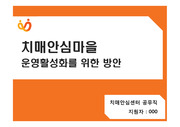THE EFFECTS OF RECOMMENDING COMPLEMENTARY/SUBSTITUTE PRODUCTS ON PRODUCT COMPARISON IN ONLINE FASHION SHOPPING
* 본 문서는 배포용으로 복사 및 편집이 불가합니다.
서지정보
ㆍ발행기관 : 글로벌지식마케팅경영학회(GFMC)
ㆍ수록지정보 : Global Marketing Conference
ㆍ저자명 : Jisoo Park, Yuri Lee
ㆍ저자명 : Jisoo Park, Yuri Lee
영어 초록
When substitute products are recommended, online consumers are more likely to evaluate products based on concrete attributes than abstract attributes and to perceive subordinate attributes as more important. When complementary products are recommended, concrete or subordinate attributes considered relatively less important, leading to less choice difficulty during the comparison process. Introduction Retailers use recommendation systems to support Internet shoppers who face the problem of searching for and selecting the right product from a vast assortment of options. Previous research argues that online recommendations help decision making by reducing consumers’ cognitive effort, while other studies claim that online recommendations increase consumers’ confusion (Xiao & Benbasat, 2007). One of the reasons for this lack of consensus seems the characteristics of recommendations not considered in the research. This study attempts to investigate how recommended product types, whether they involve complementary or substitute products, influence consumers’ decision-making process when shopping for fashion products. We address recommendations of complementary and substitute products prime consumers’ construal levels in different ways; consumers compare products at a lower construal level when substitute products are recommended than when complementary products are. We also demonstrate that consumers, as a consequence, evaluate alternatives based on concrete attributes (i.e., the physical and aesthetic characteristics of products), as opposed to abstract attributes (i.e., values and qualities), when substitute products are recommended, and perceive product attributes previously considered less important as being more important after recommendations. Literature Review Recommendations of Complementary and Substitute Products A recommendation system is the electronic software that implicitly and/or explicitly elicits the interests or preferences of consumers and provides recommendations (Xiao & Benbasat, 2007). In online fashion stores, such a recommendation system is often found as a form of recommendations of substitute (i.e., similar) or complementary (i.e., matching) products on the product detail pages. Presenting complementary or substitute products on a webpage can serve as a product display that affects consumers’ purchase decision. Because online shoppers move through webpages vertically (i.e., between product list pages) or horizontally (i.e., from product list pages to product detail pages), the simultaneous comparison of all alternatives can be difficult (Lee & Yi, 2014). Accordingly, consumers make local choices after comparisons on a single page, which subsequently affects the global choice (Simonson & Tversky, 1992). To explain how recommending complementary or substitute products affects decision making, this study adopts Construal Level Theory (Liberman & Trope, 1998) as its theoretical framework. It claims that people construe an event or an object at different levels of abstraction, from a lower-level, concrete to a higher-level, abstract construal, and represent it more abstractly as psychological distance increases (Liberman & Trope, 1998). Recent studies of assortment found that benefit-based organizations of assortment lead to more abstract construal, relative to attribute-based organizations of assortment (Lamberton & Diehl, 2013). Given that recommended substitute products share similar attributes with alternatives and are from the same product categories, the distance between the alternatives and recommended products is relatively short. Meanwhile, complementary products are recommended based on their benefits and selected among different product categories relatively far from the alternatives. Therefore, we suggest H 1 that consumers evaluate and compare alternatives in a concrete way when substitute products are recommended, on the other hand, in an abstract way when complementary products recommended. Recommendations and Product Comparison The attributes considered during evaluation are expected to differ since different levels of construal are induced by two types of recommendations. During the purchase decision, consumers often perform relative comparisons across options on attributes (Bettman, Luce, & Payne, 1998). For fashion products, both concrete and abstract attributes exist within a hierarchical structure, whereby abstract attributes are determined by concrete ones (Kim & Rhee, 1991). Prior research on construal level indicates that concrete attributes are emphasized as psychological distance decreases, whereas abstract attributes become salient as this distance increases (Liberman, Trope, & Wakslak, 2007). Accordingly, we posit H 2 that when substitute products are recommended, consumers weigh concrete attributes more than abstract attributes. On the other hand, when complementary products are recommended, where abstract benefits are emphasized, consumers consider abstract attributes more important than concrete attributes. Recommendations also influence consumers’ experience of difficulty during the comparison process. When examining alternatives based on attributes, consumers have a tendency to give more weight to attributes that they think are important (Dhar, Nowlis, & Sherman, 1999). Thus, choice task entails distinction between more and less important attributes (Sela, Berger, & Nardini, 2013), which leads to clear preference and less difficulty of choice. Research suggests that construal level affects the change in attribute weights for central or peripheral features in that a high construal level decreases comparison relative to a low construal level by shifting attention away from low-level details (Khan, Zhu, & Kalra, 2011). This finding implies that one can distribute attribute weights better at a high construal level, while one may weigh unimportant attributes heavily at a low construal level. Accordingly, we propose H 3 that consumers distinguish important core attributes from less important subordinate ones when complementary products are recommended. On the contrary, when susbtitue products are recommended, consumers consider subordinate attributes more important after recommendations, making the comparison of the alternatives difficult. Method Seven hundred and two females in their 20s and 30s in South Korea participated in online survey. The survey used a 2 (products: shirts and jackets) × 2 (recommendation: substitute and complementary) between-subject design. We randomly assigned half the participants to the shirts condition and the other half to the jackets condition. After giving purchasing scenarios with product assortments of six products, we asked participants to look around the assortments and select tentative purchase options. Participants then were asked to rate the perceived importance of concrete and abstract product attributes. Later, we recommended four substitute or complementary products for each of the two most preferred alternatives. After allowing participants sufficient time to explore the recommended products, we asked them to make their final decision. After indicating their choices, participants completed several questions related to their choice process on seven-point scales. We measured behavioral identification, perceived importance of concrete and abstract attributes, information overload during the selection process, and choice difficulty. To investigate the possibility that participants’ personal tendencies affect the choice, we additionally measured maximization tendency, fashion involvement and perceived fit for recommendation and Internet shopping experience. Finally, demographic characteristics were measured. The stimuli photos used in the study were collected from five Internet shopping malls to increase external validity, and selected on the judgments of the researchers and experts after a pre-test. Results Respondents exhibited no differences in maximization tendency, fashion involvement, perceived fit for recommendation, or experience of Internet shopping regardless of the recommended stimulant. However, as expected, respondents of substitute products with recommendations showed a lower behavioral identification score than did those of recommended complementary products. This result indicates recommendation of substitute products induces a lower construal level, accepting H 1. The perceived importance of product attributes varied by recommendations. Prior to product recommendations, no difference in the importance of concrete or abstract attributes was observed between the groups. However, the perceived importance of concrete attributes increased after recommendation of substitute products, while no significant change in the importance of concrete attributes was found after recommendation of complementary products. Recommendation have no effect on the change in the perceived importance of abstract attributes. Rather, product type did have an effect: the importance of abstract attributes increased after recommendations when jackets were compared. These results imply that recommendation of substitute products solely had an effect on the evaluation of concrete attributes, partially supporting H 2. Recommendations were also found to affect the increase in the importance of subordinate product attributes. Participants were likely to weigh subordinate, concrete attributes more after recommendation of substitute products than after recommendation of complementary products. In addition, when substitute products were recommended, participants considered subordinate, concrete attributes more importantly than subordinate, abstract attributes. The increase in the importance of subordinate, abstract attributes was irrespective of recommendation type. This result supports the notion that recommendation types can systematically influence the evaluation of options. When substitute products were recommended, consumers tend to assess products based on concrete attributes and perceive subordinate attributes as more important than before recommendations. On the contrary, when complementary products were recommended, the types of attributes served as evaluation criteria were unchanged and did not accompany an increase in the importance of subordinate attributes. According to Sela et al. (2013), the distinction between important and unimportant attributes blurs as the importance of subordinate attributes increases, which implies it becomes difficult to compare options. Indeed, regardless of product types, respondents in the present study were more likely to experience difficulty in making a decision when substitute products were recommended than when complementary products were, supporting H 3. Conclusion This study contributes to theory and practice in many ways. Our work demonstrated that the recommendation type alters the perception of the importance of the attributes of fashion products by affecting consumers’ construal levels. Furthermore, we extended the literature on recommendation systems by identifying additional factors that influence consumers’ decision-making process. Prior research has focused on the horizontal presentation of recommendation. We, however, investigated how vertical presentation, namely recommendation on product detail webpages, affected the evaluation of alternatives. Practically, the findings have important managerial implications. Retailers provide recommendations to increase sales by helping consumers efficiently make a purchase decision. Nevertheless, consumers may engage in a complex comparison process when substitute products recommended. When complementray products recommended, the attributes used as comparison criteria are relatively consistent and steady. Thus, retailers can predict a consumer’s final choice based on the early prediction of his/her preferences. The results of this study are useful for offline retailers as well as online retailers wishing to marketing and sales strategies.참고 자료
없음태그
"Global Marketing Conference"의 다른 논문
 THE ROLES OF GREEN PACKAGING IN UGLY FOOD PURCHASE INTE..22페이지
THE ROLES OF GREEN PACKAGING IN UGLY FOOD PURCHASE INTE..22페이지 THE IMPACT OF INDUCED AWE ON ETHICAL TOURIST BEHAVIORS5페이지
THE IMPACT OF INDUCED AWE ON ETHICAL TOURIST BEHAVIORS5페이지 A BIBLIOMETRIC ANALYSIS OF SPIRITUAL TOURISM RESEARCH15페이지
A BIBLIOMETRIC ANALYSIS OF SPIRITUAL TOURISM RESEARCH15페이지 SOCIAL NETWORK ANALYSIS AND RESPONSE TIME TESTING: CONS..11페이지
SOCIAL NETWORK ANALYSIS AND RESPONSE TIME TESTING: CONS..11페이지 THE EFFECTS OF PARA-SOCIAL INTERACTION ON ONLINE CELEBR..3페이지
THE EFFECTS OF PARA-SOCIAL INTERACTION ON ONLINE CELEBR..3페이지 THE INFLUENCE OF OPINION LEADERS ON DAILY DEALS USER’S ..3페이지
THE INFLUENCE OF OPINION LEADERS ON DAILY DEALS USER’S ..3페이지 HOW IMMERSIVE RETAILING AFFECTS CONSUMERS’ URGE TO BUY:..6페이지
HOW IMMERSIVE RETAILING AFFECTS CONSUMERS’ URGE TO BUY:..6페이지 KEY TO SUPERSTARDOM IN A GLOBALISED MARKET: THE ROLE OF..6페이지
KEY TO SUPERSTARDOM IN A GLOBALISED MARKET: THE ROLE OF..6페이지 A POST-PANDEMIC LOOK AT TOURISTS’ PERCEIVED COOLNESS OF..4페이지
A POST-PANDEMIC LOOK AT TOURISTS’ PERCEIVED COOLNESS OF..4페이지 EXTRACTING OFFLINE RETAIL SHOPPING PATTERNS: OLLABORATI..5페이지
EXTRACTING OFFLINE RETAIL SHOPPING PATTERNS: OLLABORATI..5페이지


















